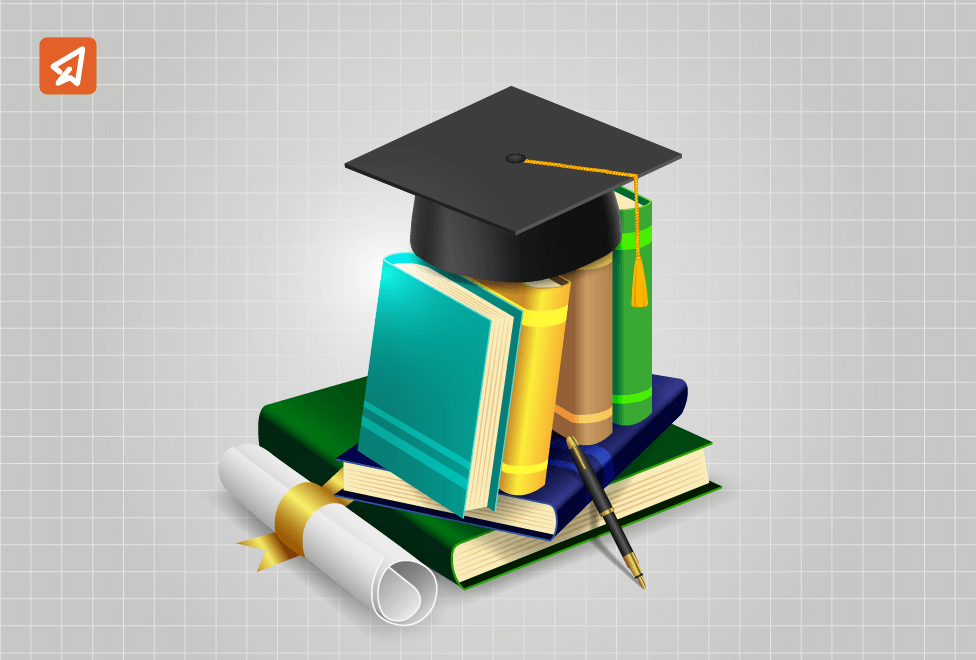What is Digital Learning & How is it Transforming K-12 Education?

Imagine a classroom where students aren’t limited by textbooks or geographical borders but can dive into interactive simulations or collaborate on projects with peers across the globe. The classroom of tomorrow won’t be confined by walls; it will exist in the cloud, empowering students to learn anytime, anywhere.
This is the transformative power of digital learning. While some may view it as simply incorporating technology into lessons, the truth is far more exciting.
Digital learning represents a strategic shift towards a student-centered approach, where education is personalised, engaging, and empowering for students, so they become active participants in their own learning journey.
But with so much information out there, you might be wondering: what exactly is digital learning, and why is it becoming so crucial in today’s classrooms?
This blog post aims to be your guide. We’ll break down the core principles of digital learning, explore the reasons why it’s needed, and most importantly, equip you with the tools to navigate this exciting transformation in your school.
What is Digital Learning in Education?
Digital learning involves using technology for education. It includes a range of activities where learners use digital platforms, resources, systems, and apps. This can mean taking online classes, researching online, watching educational videos, and using digital tools during in-person training.
Digital learning, meaning the use of technology to facilitate learning experiences, lets learners access well-designed courses and training materials anytime, anywhere. Because of features like mobile learning, active learning, and gamification, digital learning courses are often more interactive and engaging.
Digital Learning Tools – Key Components and Pedagogies
Digital learning utilises technology to create a more engaging and effective learning experience. Here are some key components that can be incorporated into a digital learning strategy:
-
Content Delivery
- E-textbooks
- Open Educational Resources (OERs)
- Learning Objects
-
Technology Tools
- Mobile Learning
- Classroom Technologies
- Virtual Reality (VR)
- Augmented Reality (AR)
- Learning Management Systems (LMS)
- Learning Analytics
Digital learning should complement, not replace, traditional teaching methods. Here are some pedagogies that effectively integrate technology into the learning process:
- Combining face-to-face and online learning (blended or hybrid learning)
- Online learning experiences
- Flipping the traditional classroom model
- Providing one-to-one access to digital resources
- Tailoring instruction to meet individual student needs
- Incorporating elements of play and competition into learning (gamification)
- Structuring learning around desired outcomes (Understanding by Design or UBD)
See digital learning in action with these exciting Smart Classroom Activities tailored for K-12 education.

Boost Student Engagement With Curated Activities for Your Classroom!
✓ 60+ activities across 6 different engagement categories
✓ Designed for grades 3 to 12 and easy to plug into any lesson plan
✓ Comes with printable cards and step-by-step instructions
Advantages of Digital Learning
-
Accessibility & Flexibility
Digital learning breaks down geographical boundaries and rigid schedules. Students can access materials and learning sessions from anywhere with an internet connection, offering flexibility to learn at their own pace and convenience. It is also ideal for students with disabilities, busy schedules, or those in remote locations who may have difficulty attending traditional classrooms.
-
Personalised & Enhanced Learning Experiences
- Individualised Pacing: Students can progress through materials at their own speed, revisiting concepts or accelerating as needed for better understanding.
- Adaptive Learning: Tools like Extramarks Smart Class Plus can tailor learning paths, suggesting materials and activities based on individual student needs and progress.
- Multimodal Content: Digital platforms like Extramarks offer lessons through text, video, audio, simulations, and interactive elements, catering to different learning styles.
-
Increased Engagement & Motivation
Digital tools bring learning to life! Interactive elements like games, simulations, and virtual labs make concepts more engaging than textbooks. Students take charge of their education with digital learning, choosing their own learning paths and finding resources that resonate with them. Plus, online quizzes and assessments provide immediate feedback, allowing students to identify areas needing work and adjust their approach right away.
-
Collaboration & Global Reach
Online learning platforms turn classrooms into global hubs. Discussion forums, shared workspaces, and video conferencing break down geographical barriers, allowing students to team up on projects with classmates anywhere in the world. They can connect face-to-face with peers and experts in real-time through video calls, creating a vibrant exchange of ideas and cultures that broadens perspectives and builds a truly international learning community.
-
Efficiency & Scalability
By automating repetitive tasks like grading and simplifying communication, online tools empower teachers to dedicate more time to what matters most – creating engaging lessons and providing personalised feedback to students.
Strategies to Implement Digital Learning
-
Establish Clear Goals and Objectives
Begin by defining clear goals and objectives for digital learning initiatives. What are the desired outcomes? Understanding your objectives is crucial before moving forward with any digital learning efforts.
-
Develop a Comprehensive Digital Learning Plan
Prepare a detailed digital learning plan that articulates the school’s objectives for digital education and outlines strategies for achieving them. This plan should include various aspects, including infrastructure requirements, curriculum alignment, and resource selection.
-
Address Infrastructure Needs
Ensure that the school’s infrastructure supports digital learning initiatives effectively. This includes addressing issues related to internet accessibility, availability of devices, and IT support systems to ensure smooth implementation and operation.
-
Start with Pilot Projects
Take a gradual approach to digital learning implementation by starting with small-scale pilot projects. This allows for experimentation, evaluation, and refinement before expanding to larger initiatives. Starting small enables educators to identify challenges and successes more easily.
-
Select Appropriate Digital Learning Tools
Carefully select and implement digital learning tools and resources that align with the school’s curriculum and learning objectives. It’s essential to choose tools that enhance student engagement and facilitate meaningful learning experiences.
-
Integration into Curriculum
Integrate digital learning seamlessly into the curriculum to make it relevant and engaging for students. Ensure that digital tools and resources are utilised in ways that enhance learning outcomes and support instructional goals effectively.
-
Provide Training Opportunities
Offer training sessions to help teachers and staff learn how to effectively use digital learning tools. Giving them the chance to learn and practice with these tools is key to their success.
-
Support Implementation
Be there to help teachers and staff as they start using digital learning. Ongoing support is important to help them overcome any challenges and make the most of the technology.
-
User-Friendly Technology
Make sure the technology used in classrooms is easy to use and works well. No one should have to struggle with complicated tech stuff—it should be smooth sailing for everyone involved.
-
Foster Collaboration
Encourage teachers to work together and share their ideas and experiences. When they collaborate, they can learn from each other and make teaching even better.
-
Create a Digital Learning Team
Form a team of people from different parts of the school to focus on digital learning. Having a dedicated team can help keep things on track and make sure everyone is working towards the same goals.
-
Check-in with Staff and Students
Take some time to assess digital learning’s progress. Talk to both staff and students to determine what’s working well and what could be improved.
-
Evaluate and Adapt
Keep an eye on how digital learning is going and be ready to make changes if needed. Being flexible and open to adjustments helps keep things moving in the right direction.
Watch Kamna Khanduja from Rawal Public School share how students adapted to digital learning post-pandemic and how Extramarks supported their journey with engaging solutions.
Important Considerations
Not everyone has the same tech or internet access at home, which can create a gap in opportunities for online learning. To make things fair, schools and programs need to find ways to bridge this “digital divide.” Teachers and students might also need some extra support at first to get comfortable with the online learning tools.
Online learning can be a powerful tool, but it often works best when combined with traditional teaching methods. This creates a well-rounded education that gives students the benefits of both approaches.

How Extramarks Can Help You Bring Digital Learning Into Your Classroom
Extramarks provides smart classroom tools to help schools with digital learning. Some of our offerings include:
- Smart Class Plus: This is a platform that gives teachers different tools to create interesting and interactive lessons.
- The Learning App: It’s a mobile app for students to easily access learning materials and finish assignments.
- Extramarks Live: This lets students connect with teachers and other students in real-time for online lessons and tutoring.
Apart from these, Extramarks also offers training courses for teachers to learn how to use digital tools effectively. This way, both students and teachers can make the most of digital education.
Take the leap forward with Extramarks smart school solutions.
Embrace the future of education today!
Learn MoreClosing Thoughts
The digital revolution is transforming education, and digital learning is no longer a futuristic concept but an evolving journey of continuous improvement. It’s a chance to create a more engaging and effective learning experience for students, empowering them to become active participants in their own education.
Don’t be afraid to embrace change! Start planning how you can integrate digital tools into your classroom. Experiment with different approaches and see what works best for you and your students.
Last Updated on April 8, 2025
Reviewed by

Priya Kapoor | AVP - Academics
Priya Kapoor is an accomplished education professional with over 18 years of experience across diverse fields, including eLearning, digital and print publishing, instructional design, and content strategy. As the AVP – Academics at Extramarks, she leads academic teams in creating tailored educational solutions, ensuring alignment with varied curricula across national and international platforms...read more.










